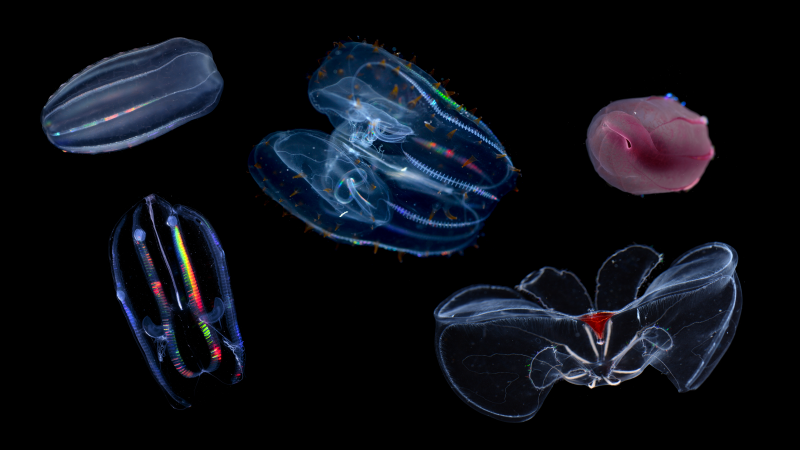
Unraveling the Adaptations of Comb Jellies: A Deep Dive into Human Brain Function and Disease Progression
New research has been conducted by U.S. National Science Foundation-funded scientists using NSF facilities, revealing how ocean creatures have adapted to thrive in vastly different environments. The study also offered insights into the inner workings of the human brain.
Researchers from various disciplines of biology utilized tools provided by the NSF-supported Center for High-Energy X-ray Sciences at the Cornell High Energy Synchrotron Source to investigate deep-sea and shallow-water comb jellies. These comb jellies were found to have adapted by developing differently shaped lipid molecules in their cell membranes. This adaptation allows the cells of comb jellies to form membranes with an optimal level of stability based on their specific environment.
If deep-sea comb jellies are brought to the surface, the lack of external pressure causes their membrane structure to break down, resulting in the animals melting. Conversely, the membranes of shallow-water jellies are not dynamic enough to function properly when exposed to deep-sea levels of pressure.
The study also sheds light on how deep-sea animals survive in extreme environments and has potential implications for human biology and neurodegenerative diseases like Alzheimer’s. Plasmalogens, the lipids found in the membranes of deep-sea comb jellies, are also present in abundance in the human brain. The loss of these lipids has been linked to disease advancement and aging in humans. Researchers believe that their discoveries regarding plasmalogen structure could provide valuable insights into the role of these molecules in human physiology and disease.
Overall, this research highlights how studying marine life can provide valuable insights into human biology and disease progression.
In conclusion, a new study conducted by U.S. National Science Foundation-funded scientists using NSF facilities has shed light on how ocean creatures have adapted to thrive in vastly different environments and offered insights into the inner workings of the human brain. The study revealed that comb jellies have developed differently shaped lipid molecules in their cell membranes, which allows them to form stable membranes based on their environment.
The research also highlighted that plasmalogens, which are present abundantly in both marine life and humans, play a crucial role in human physiology and disease progression.
This study has significant implications for our understanding of how marine life survives under extreme conditions and provides valuable insights into human biology and neurodegenerative diseases like Alzheimer’s.
The findings may also help researchers develop new treatments for such diseases or identify new ways to prevent them from occurring altogether.
Overall, this research underscores the importance of studying marine life as it can provide valuable insights into our own biological processes and disease states.

